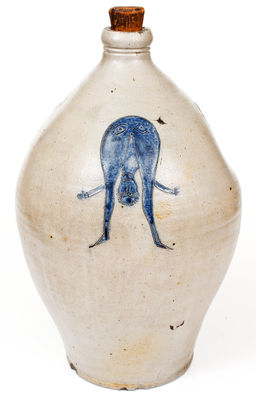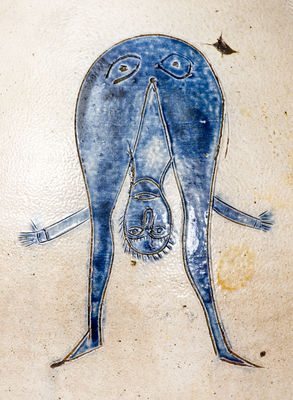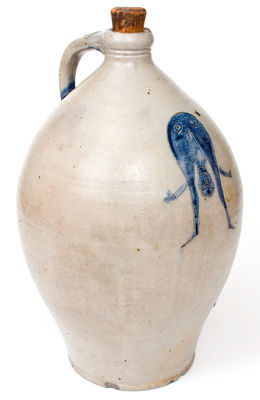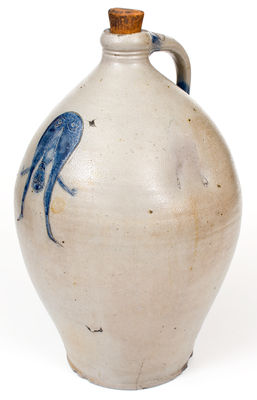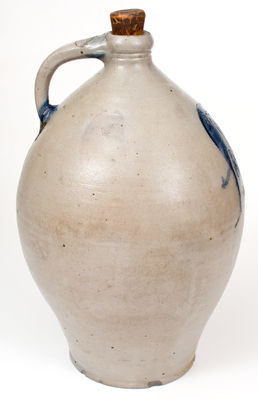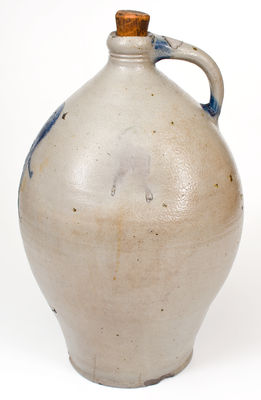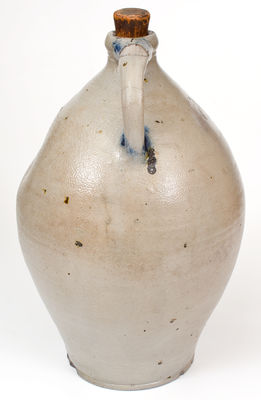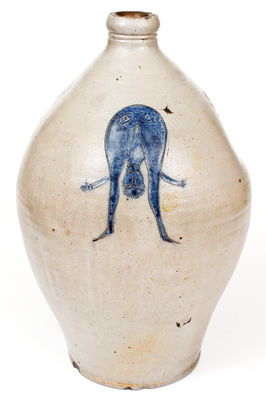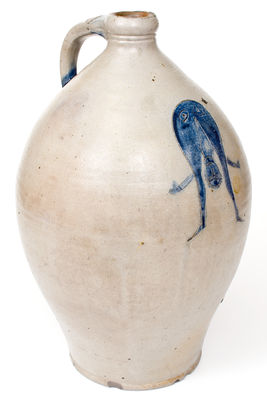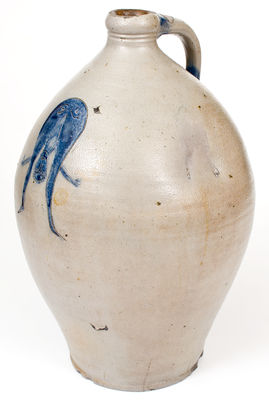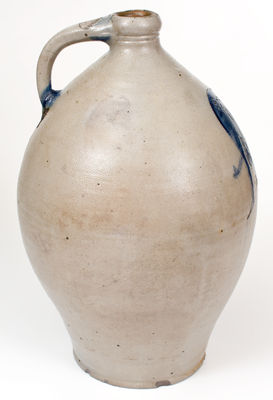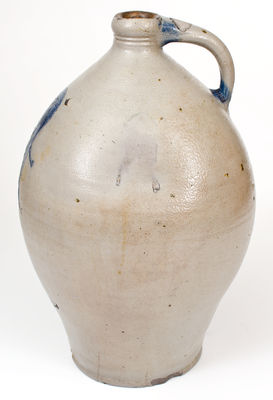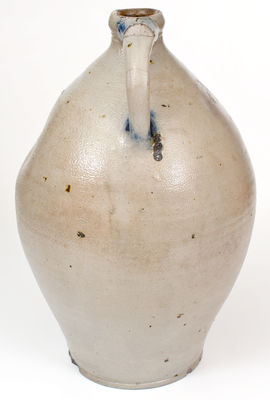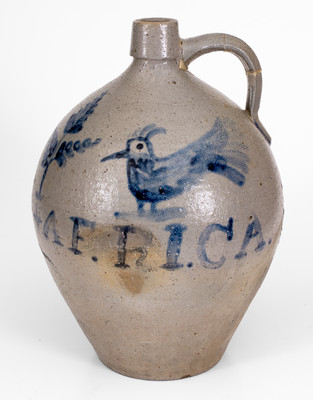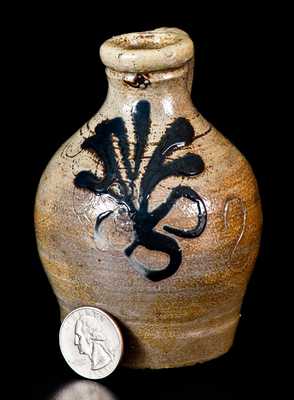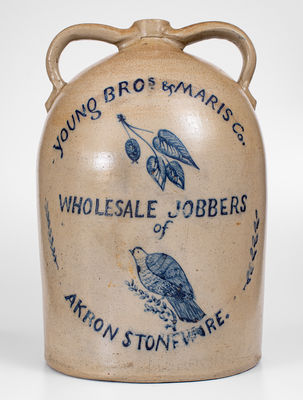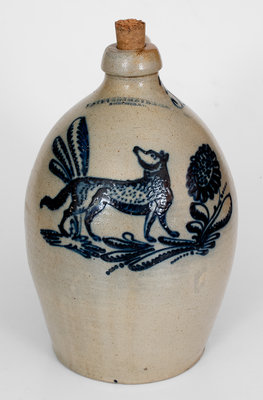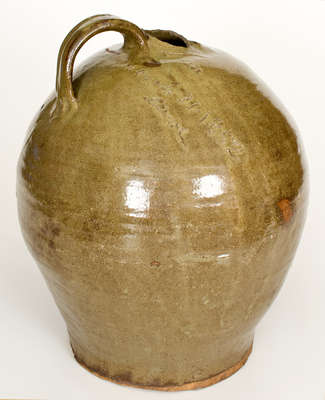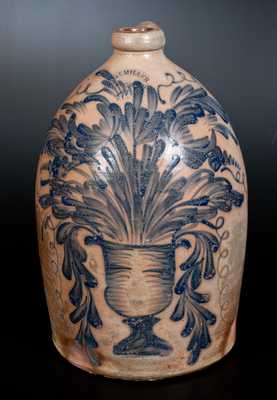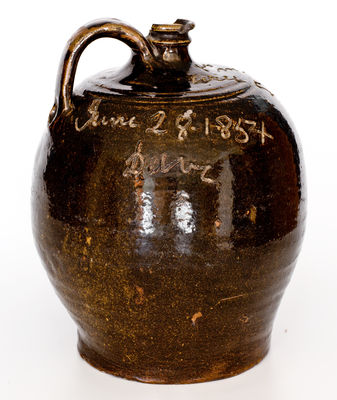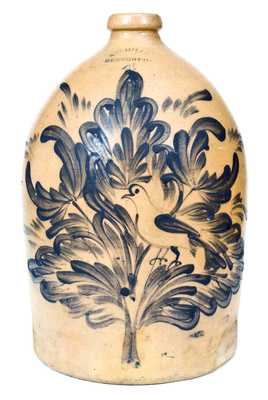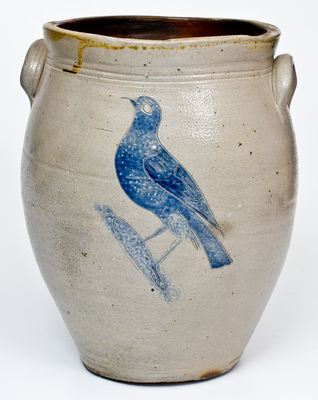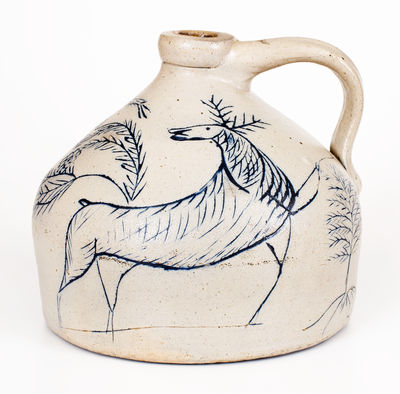Exceedingly Rare and Important Three-Gallon Stoneware Jug with Incised Design of a Man Looking Between His Legs, attributed to the William Capron Pottery, Albany, NY, circa 1800-1805, ovoid jug with footed base and doubly-tooled spout with rounded mouth, the front decorated with a large incised and cobalt-highlighted design of a man with outstretched arms, bending over and peering backwards between his legs. Incised eyes appear on the man's rear end. The figure's head includes finely-executed eyes with impressed pupils and incised lashes and brows, as well as spiked hair, accurately pointed downward by the pull of gravity. Brushed cobalt highlights to handle terminals. One of the earliest renderings of the human form in American stoneware, this jug's decoration is also among the most famous and recognizable incised images in its medium. It was once owned by the renowned American folk art collector, Barry Cohen, who amassed a select grouping of some of the finest pieces of American stoneware known. Among these are the Anna Pottery Civil War band temperance jug, now in a private collection, and the Elizabeth Crane punch bowl with incised fish, regarded as the greatest American stoneware object known, now owned by the American Folk Art Museum. The significance of this jug is evidenced by its early exhibition in 1975 at the Abby Aldrich Rockefeller Folk Art Museum in Williamsburg, VA. Nearly thirty years later, it would be illustrated in scholar Sumpter Priddy's groundbreaking book, American Fancy: Exuberance in the Arts 1790-1840, because of the highly-decorative and playful nature of its design. The decorator's humorous addition of eyes to the rear end of the figure indicate some form of imagery or wordplay involved in the incising. The intended meaning of the decoration is possibly a visual pun for the word "hindsight;" another interpretation is the word, "mooneyed," a slang term for drunk, with documented use in America as early as 1737. The jug's distinctive spout construction leads to an attribution to the pottery of William Capron, who operated the earliest stoneware manufactory in Albany, New York, circa 1800-1805. Rarely seen in Albany stoneware is this jug's impeccable firing and color, featuring dark cobalt slip, which crisply delineates the figure, set against a light-gray ground. As all of Barry Cohen's most memorable stoneware pieces currently reside in the nation's leading private and public collections, the sale of this jug offers a rare opportunity to acquire a legendary work previously owned by one of the nation's most iconic and discriminating collectors. Provenance: Originally found in the Catskill Mountains of NY; Ex-Barry Cohen Collection, New York, NY; Ex-David Schorsch and America Hurrah Antiques; Ex-Allan Katz Americana. Exhibited: The Abby Aldrich Rockefeller Folk Art Center, Williamsburg, VA, 1975; "American Fancy: Exuberance in the Arts 1790-1840," April 3 2004-March 20, 2005. Illustrated: America Hurrah and David Schorsch, "The Barry Cohen Collection," 1990; Michelle Osborn, USA Today, "Utilitarian folk art: American stoneware jumps in value among collectors," June 25, 1990; Sumpter Priddy, American Fancy: Exuberance in the Arts 1790-1840, p. 183, fig. 325. Literature: For pieces produced by the same maker/school, see Hartmann, "The Stoneware of Early Albany: A Mystery Solved," Ceramics in America 2012. Chips to foot, including a 1 7/8" chipped section to foot. Short in-the-firing lines to base area, which are glazed over, and an in-the-firing surface fissure to underside. A horizontal hairline to handle and a horizontal surface line to underside of handle. Small in-the-firing iron pings to surface. H 17".

